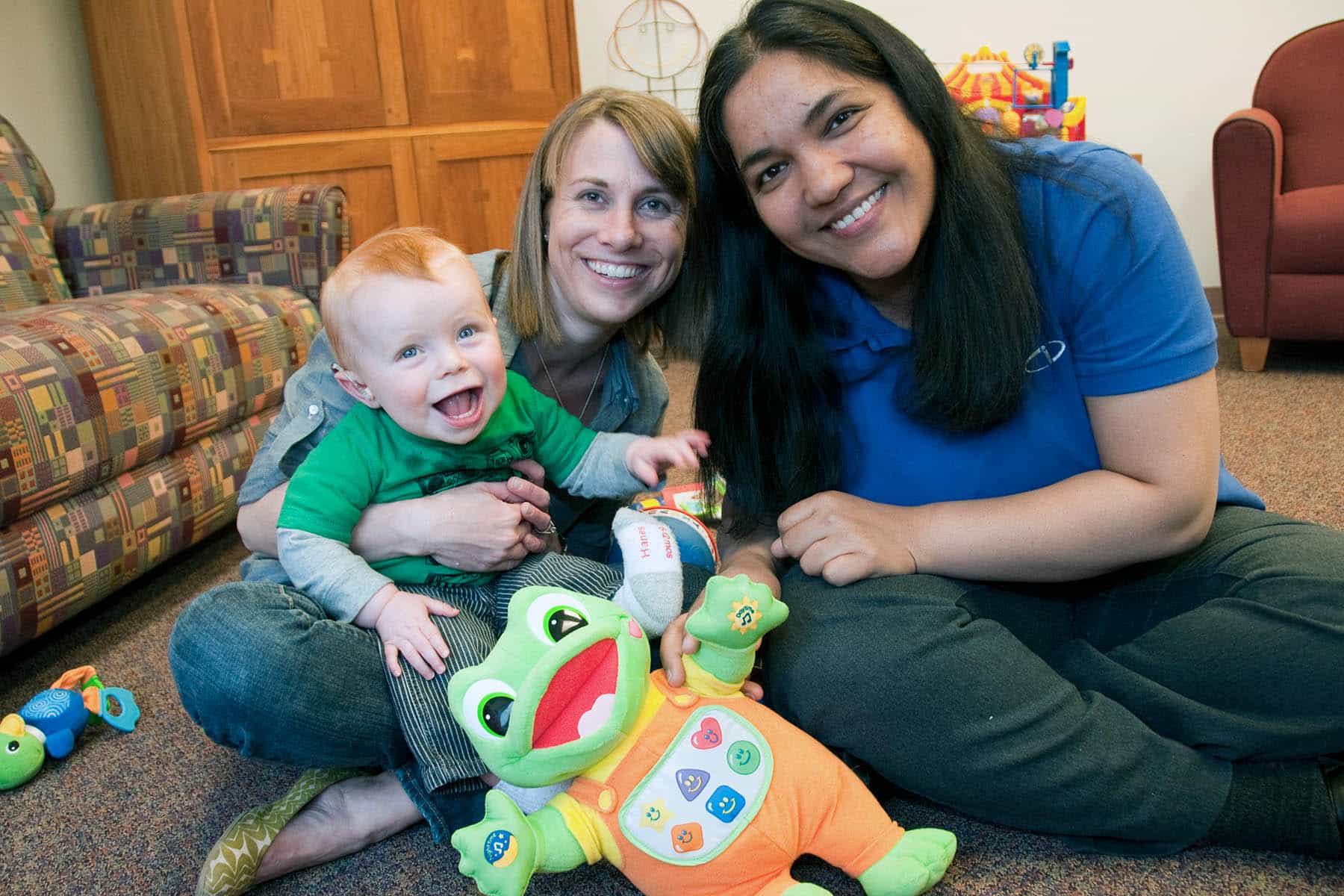Picture this: A family leaves a pediatric audiology appointment equipped with their child’s new (unfamiliar, expensive) hearing device/s, a bag filled with related equipment and the audiologist’s recommendation to keep the device/s on during all waking hours.
For many families, the task of achieving full-time hearing device use feels initially overwhelming. While some have quick success, others struggle. When these families return for their next audiology appointment, they may flash a look of disappointment upon receiving the data-logging results that confirm what they already know: Their child is not wearing her device/s during all waking hours.
If you work with a family who is having difficulty working toward full-time hearing device use, consider helping them shift their focus away from the hours and instead toward their routines.
Gather information. Ask parents and caregivers to talk about situations and feelings that might be barriers to their child’s hearing device use. Ask reflective questions that prompt them to recognize strategies they have found successful.
Discuss the impact of maintaining consistent expectations. For example, insisting a child wear hearing aids at lunch and dinner when she doesn’t have to wear them at breakfast might send a confusing message.
Suggest committing to one or two daily routines at a time. This should feel more attainable than suddenly mastering full-time device use. Ideally, success within one activity provides motivation to commit to another, and another, until the child is wearing her devices during all waking hours.
Allow the family to take ownership as they choose which routine/s they want to tackle first. If they can’t decide where to begin, you might tell them it’s helpful to start with a time of day when their child is generally in a good mood. Some families prefer to begin with the morning routine in an effort to set the tone for the rest of the day. Others prefer to start with a time of day that has especially rich language, such as book time, or when their child’s hands are busy, such as meal time. Still others find that experiencing success within a short routine, such as diaper changes, motivates them to move forward and continue checking off activities from the list.
Once families develop a plan, be sure to check with them periodically to see how the plan is going — and where they want to go next.
It all adds up.
We’re all familiar with tips for increasing our daily activity level: Choose the parking spot that’s farthest away from the door. Take the stairs instead of the elevator. Go on a walk at lunch. Get up and move during commercial breaks. We do these things because we know the steps add up. It’s the same with hearing device use: the minutes add up, too.
Help families reflect on their existing routines and commit to keeping hearing devices on during these times, no matter how short or insignificant they may seem. Ask reflective questions, such as:
- “What would it look like if she kept her hearing aids on for that half hour between bath time and bed time?”
Sure, a half hour may not seem like much in the context of an entire day, but over the course of a month, that daily 30 minutes adds up to 15 valuable listening hours.
- “I know you’re hesitant to bring devices on outings because you’re afraid you might lose them. How do you think she’d do at the grocery store, when she’s facing you in the cart?”
Children learn language through experiences. Outings provide valuable listening opportunities and exposure to novel language. Retention items such as clips, headbands, pilot caps and wig tape can offer parents peace of mind during time away from home.
- “I’m glad you figured out she’ll let you put the hearing aid in if you wait until it’s time to get dressed! How would it be for your family’s morning routine if you changed her out of pajamas right after she wakes up, instead of waiting until after breakfast?”
Safely storing the hearing device/s in the child’s bedroom overnight might give parents a visual reminder to put the device/s on first thing in the morning.
- “It sounds like you’re feeling uneasy about having her wear her cochlear implant when the babysitter is here. Can you talk to me a little more about that?”
It’s important that all caregivers understand the importance of wearing hearing devices – and how to care for them.
- “So she gets to watch a show while you cook dinner, but you said she’s already used to removing her hearing aids then. Would this be a good battle for you to pick? How would she react if you turn on the TV only if her devices are on, too?”
Pediatricians urge parents to limit screen time. Parent interaction is the best way to help a toddler listen and talk; however, if a child does spend time in front of a screen, her hearing device/s can provide better auditory access to sounds, music, speech and spoken language.
Still stuck?
A reward chart can be an effective positive reinforcement tool for some children, depending on their age, temperament and understanding. Parents can use stickers, stamps or drawings to mark and celebrate their child’s accomplishments.
Find this and other useful resources in CID’s new curriculum for infants and toddlers with hearing loss, Early Listening at Home. The curriculum includes the handout, Sweet Success! Using Daily Routines to Support Listening and Talking, Strategies for Achieving Full-Time Device Use and a companion tracking tool for professionals.
———————–
Manley, J., Odendahl, J. & Samson, M. (2019). Early Listening at Home Curriculum. St. Louis, MO: Central Institute for the Deaf.

Megan Samson is the coordinator of the Anabeth and John Weil Early Childhood Center at CID – Central Institute for the Deaf. Ms. Samson holds professional certification from the national Council of Education of the Deaf, as well as Listening and Spoken Language Specialist certification (LSLS Cert AVEd) from the AG Bell Academy. She co-authored the CID Early Listening at Home- ELH curriculum. Ms. Samson has also presented on auditory training at CID workshops.












